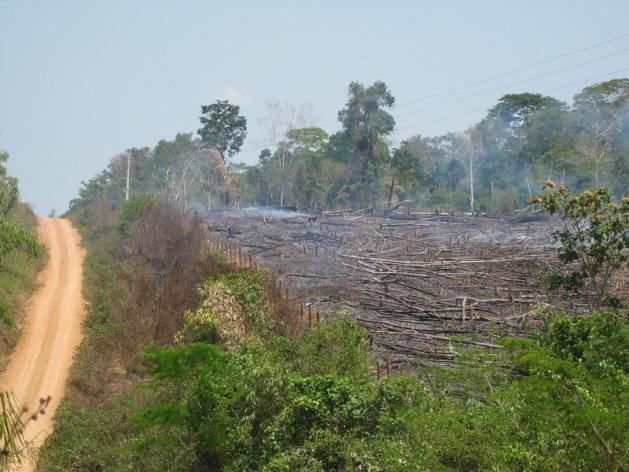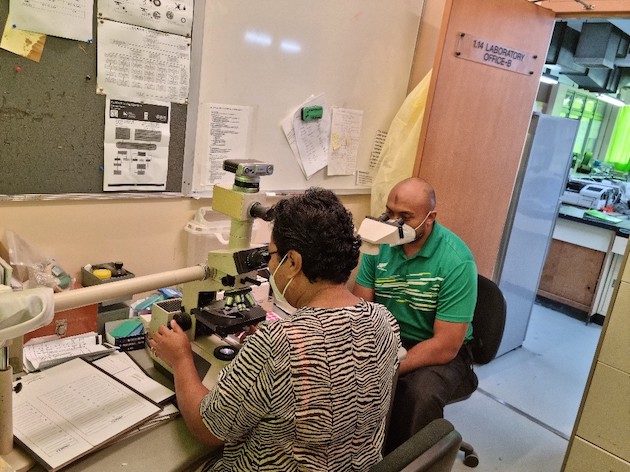We Must Ensure That Climate Funding Reaches the Guardians of the Forests — Global Issues
WASHINGTON DC, Sep 27 (IPS) – US $270 million may sound like a lot of money, especially for just one year. But it is only a small fraction—less than one percent—of all global funding for climate change adaptation and mitigation. This small fraction, however, is the annual amount that was invested in the tenure and forest management of Indigenous Peoples and local communities (IPs and LCs) over the past decade.
This month we learned that the actual amount of funding that reached IPs and LCs was a small fraction of the small fraction: only 17 percent went to activities that specifically named an indigenous organization.
This figure likely overestimates the actual share that reaches these communities as intermediary institutions also have project implementation costs that are part of this funding. The discrepancy calls into question whether the $1.7 billion pledged at the UN climate change meetings to Indigenous Peoples and local communities for their land tenure and conservation initiatives will actually reach them.
The rights of Indigenous Peoples and local communities are inextricably linked to the preservation of key ecosystems and the maintenance of carbon stored in tropical forests and peatlands. At least 36 percent of Key Biodiversity Areas globally are found on IP and LC lands, along with at least 25 percent of the above-ground carbon storage in tropical forests.
Efforts to reduce climate change and the loss of biodiversity depend on these landscapes remaining intact, and IP and LC forest management has proven more effective in this regard than any other. While 2020 saw the highest deforestation rate in Brazil’s history, for example, deforestation rates were up to three times lower in Indigenous territories.
The most recent United Nations climate report, embraced this point, stating: “Supporting Indigenous self-determination, recognizing Indigenous Peoples’ rights and supporting Indigenous knowledge-based adaptation are critical to reducing climate change risks and effective adaptation.”
In a report our organizations released in September, we found that between 2011 and 2020, donors disbursed approximately $2.7 billion (on average $270 million annually) for projects supporting IP and LC tenure and forest management in tropical countries. We compiled data on this funding stream and assessed the grants along different dimensions of “Fit for Purpose” criteria—meaning that funding is given in ways that are effective, relevant and appropriate for IP and LCs.
Applying the “Fit for Purpose” criteria for IP and LC funding over the past decade was educational. We found that:
- IP and LC-led: Only 17 percent of IP and LC tenure and forest management funding between 2011 and 2020 mentioned an indigenous organization, indicating that a low share of funding is under leadership of Indigenous and community organizations.
- Mutually Accountable: There is a lack of accountability and transparency from donors towards IPs and LCs, inhibiting IP and LC understanding and influence over donor priorities and decisions. Most private foundations, who represent the majority of the IPLC Forest Tenure Pledge donors, do not share data on their projects systematically.
- Flexible and Long-term: Donors have increasingly been providing funding through long-term funding agreements, which provides IP and LC organizations with much-needed predictability and security. Yet, a lack of flexibility to change or adapt priorities within projects restricts IP and LC organizations in addressing diverse community needs, imminent threats or seize on windows of opportunity.
- Gender Inclusive: Only 32 percent of IP and LC tenure and forest management funding included gender-related keywords, despite the essential role of women in IP and LC forest management and their notable exclusion from many governance structures and forest management decisions.
- Timely and Accessible: Due to strict eligibility and administrative requirements of bilateral and multilateral donors, IP and LC organizations must overcome considerable barriers to access funding. Funding for IP and LC tenure and forest management has therefore generally relied on traditional development aid funding structures, with national and international organizations acting as intermediaries.
Securing and protecting the tenure rights of Indigenous Peoples and local communities is one of the most cost-effective, equitable, and efficient means of protecting, restoring, and sustainably using tropical forestlands and the ecosystems services they provide.
Many things get in the way of funding Indigenous Peoples and local communities, but in the end we will not solve the twin crises of climate change and biodiversity extinction unless we embrace the need for more equitable partnerships. We have already pledged the funding to support them, now we have to make sure they receive it.
Solange Bandiaky-Badji, PhD, is the Coordinator of the Rights and Resources Initiative
Torbjørn Gjefsen is Senior Policy Advisor, Climate, for Rainforest Foundation Norway.
© Inter Press Service (2022) — All Rights ReservedOriginal source: Inter Press Service
Check out our Latest News and Follow us at Facebook
Original Source






